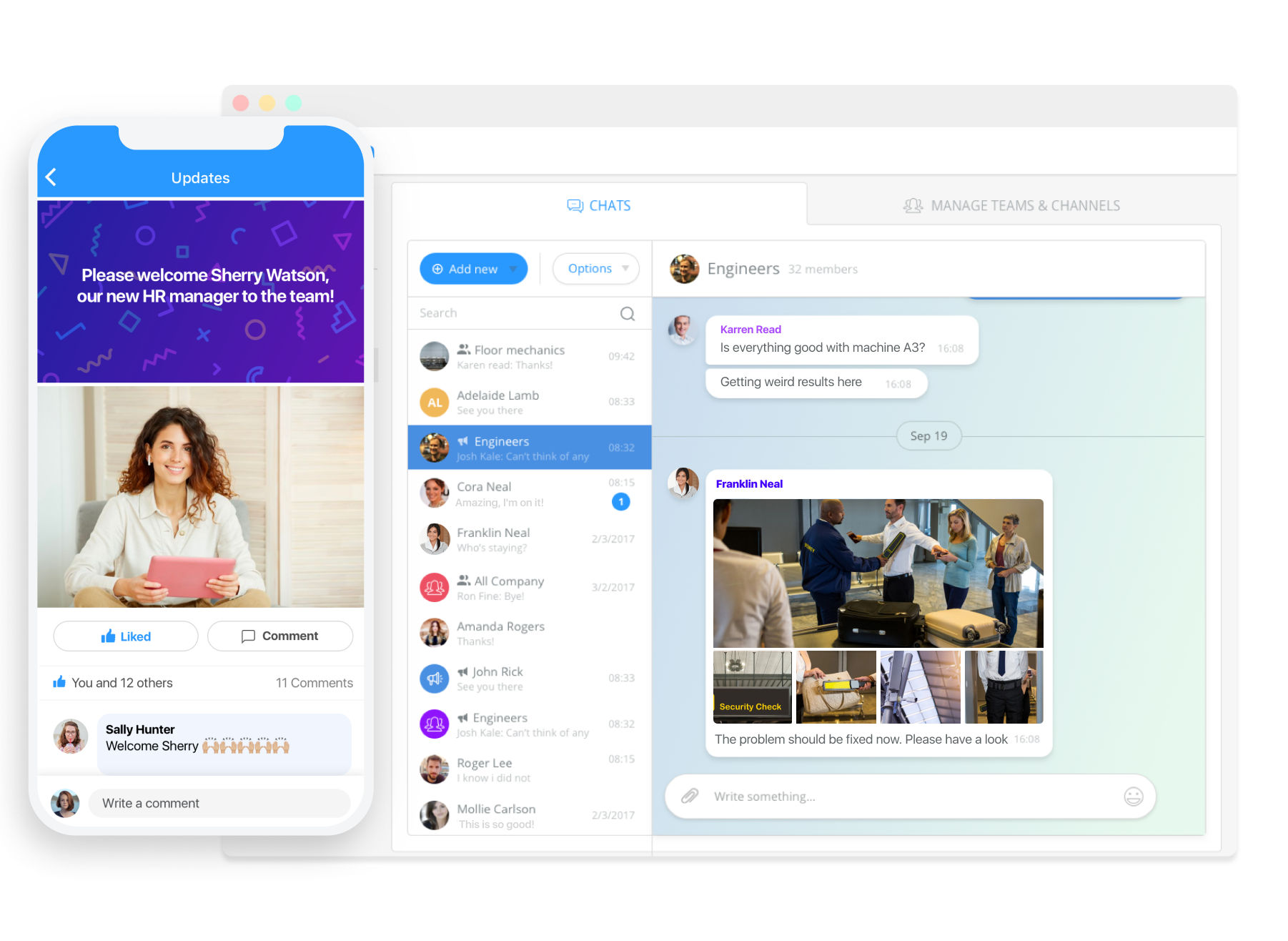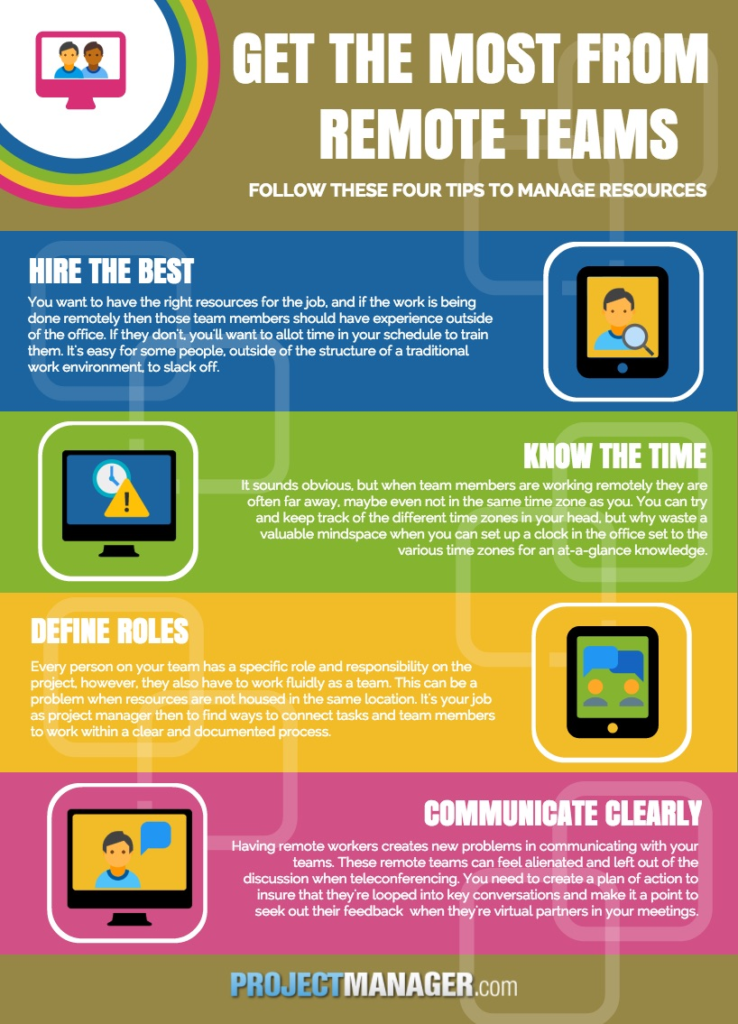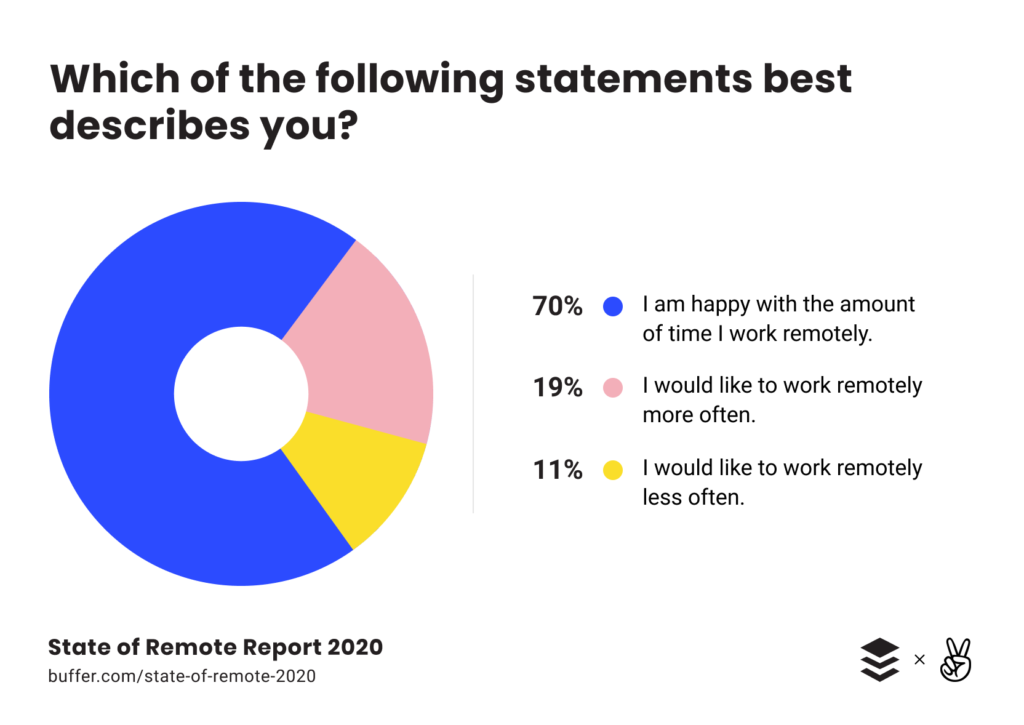Remote work has been a hot topic for the last few years now.
In fact, Gallup’s State of the American Workplace report found that around 43% of workers in the United States work remotely. And as that number continues to grow, managers recognize that they must elevate engagement levels with employees they barely know or see; it’s a gigantic, challenging task. Especially if engagement and communication between the manager and employee is low, it will directly affect productivity levels.
Thus, with the recent pandemic, businesses that were not yet considering remote work had to think fast on their feet and adapt to their new environment. It was easy enough to set employees up with equipment to work from home in a matter of days. However, effectively managing teams remotely became a whole new dynamic.
A lot of managers worried about productivity as employees shifted to a work-from-home situation. However, a Stanford University study found that “productivity increase among remote workers is equivalent to an extra day per person per week. And remote workers are, on average, less likely to burn out and in many ways more engageable than in-house workers.”
Whether your company has three, 30, or 300 remote workers, it’s essential that you know how to manage a remote team. When you have a strong grasp on how to effectively manage remote employees, then you establish a strong company culture, attract top talents, and retain the very best from your in-house team to your remote workers.
Download Managing Staff Remotely: The Complete Guide (eBook) for free!
If you’re interested in the tips then scroll on down but if you are looking to gain further knowledge into what you’re up against then take a look at these challenges.
Challenges of Managing Remote Employees
You face a whole set of new challenges when you have remote employees, and most of them may not be what you’re used to when everyone is in the same office building. Hence, you must adapt from how you usually handle things in the office, as it won’t always translate well with your remote team.
These are the most common challenges you’ll be faced with:
- limited communication, which often leads to misunderstandings, with management and co-workers
- lack of cohesion with the team
- setting schedules, there is no 9-to-5
- no clear tasks or roles
- respecting every employee’s time
- technical limitations such as no access to company computer or email
- difficult to track remote employees’ performance
- low engagement levels
- a lack of company culture
When you manage a remote workforce, you must be knowledgeable of the challenges you are up against, so that way you’re prepared for whatever comes your way. Our guide will walk you through overcoming these challenges and giving you the tools you never knew you needed.
Best Practices for Effectively Managing Remote Employees
Mobile Apps are Crucial
With remote employees, you have to ensure you’re using tools they’re familiar with. For example, Zoom for video, face-to-face communication can help with engagement. While Slack or Google Hangouts helps you stay connected in real-time. But if you’re ready to take things to the next level and provide remote workers with everything they need to succeed then you need a mobile app. And not just any mobile app, you need the mobile app that was built for remote, deskless workers – Connecteam.

Key Features Remote Employees Appreciate & Need:
- Employee Engagement, Announcements, and Latest News: Engage your employees by sharing frequent updates on reaching company goals, exceeding targets, etc. And celebrate success stories with pictures, videos, stories, and much much more.
- Surveys, Suggestion Box, and Live Polls: Gain information based on in-organizational surveys, create a suggestion box to gain feedback and insights without asking face-to-face. Entice an open door policy so that employees feel free to input their ideas to HR and management.
- Employee Group chat or Leisurely Communication: Send messages company-wide anywhere, and anytime. Allow employees to engage by liking, commenting, and being part of the conversation. Use one-way announcements or content administration.
- Share Files and Onboard Easily: Send pictures, GIFS, videos, audio notes, training manuals, forms, documents, company policies, and much more in real-time. All of this can be done from inside the free app. Create media libraries and courses to onboard remotely or train current employees with new policies.
- Digital Documents: Paperless ready to sign forms, employee handbooks, checklists, attendance policies, and more.
Connecteam is so easy to use, even the non-tech-savvy employees can onboard in a matter of minutes. Connecteam was designed for deskless companies, so no training is needed on how to use the team chat app — sign up in less than 5 minutes and start using the app.
Seamlessly Communicate With Your Remote Team
Create a Communication Strategy
“If you, the manager, don’t create good, open communication channels, the remote worker will feel, well, ‘remote’ and forgotten,” said Keith Ferrazzi, the founder, and CEO of Ferrazzi Greenlight.
Deborah Goldstein from DRIVEN Professionals, explains that in order to manage a productive remote team, you need an effective communication strategy.
- Have a number of weekly formal “check-ins”
- Set monthly, quarterly, and yearly performance goals
- Be crystal clear on expectations and task requirements like parameters, deadlines, and metrics
- Establish which channels to use, like one-to-one chats, team meetings, or open forums for feedback and ideas
Engage In Team-Building Games
By engaging in team-building activities, you are building and fostering relationships which directly leads to better retention, higher productivity, and overall employee satisfaction and happiness.
Research shows that remote workers have much weaker relationships with their colleagues than employees who work in-house.
Managers must, therefore, engage in regular team socializing to build a human connection and build trust and inclusion with the entire team. As remote employees are more involved, they positively impact the company culture.
Build Your Company Culture
No matter the business type or size, it takes time and a few ingredients to create a positive company culture such as hiring the best people, encouraging healthy and regular communication, and conveying your culture company-wide. Based on what kind of company culture you want to inhabit, you need to be proactive in transferring that to your remote team.
Have a plan that you religiously follow in place, otherwise, your remote workers won’t actually feel a connection to the company culture. For example, you boast about open communication but as a manager, you’re never available to talk shop and then some. What you need to do is to hold a virtual open-door policy to encourage your remote team to communicate with you at any time. When this mindset and action plan is input into your company culture, managing remote employees is an easier task.
Recognition Is a Must
Remote employees often feel invisible. For managers, it’s easier to recognize employees that are in-house as you’re around them five days a week. However, that’s not the case at all with remote staff. During meetings, via company-wide updates and announcements, or any time the opportunity presents itself, give your remote team a shout-out. Brag about their accomplishments, mention they were involved in a successful sale, share birthdays or anniversary wishes, and so on.

Not only will you improve productivity and boost engagement. You show your remote workers that you care, and you recognize all their hard work. As the saying goes, “a little goes a long way.”
Mark Mortensen, an associate professor of Organizational Behavior at INSEAD, said, “Being generous with public praise and acknowledgment of remote employees helps make sure their work is recognized and is a signal to coworkers that they’re pulling their weight.”
Be Responsive
“The thing that makes the distance between coworkers feel like distance is the lag in communication. If I message somebody who lives hours away and they don’t respond for several hours, I’m going to wish we worked in the same room so we didn’t have to deal with that. But if each time I message them, they respond immediately, then it’s just the same as if we were both in the office together.” – says Kellan, Customer Experience at BambooHR
Make sure your calendar is up to date, and mark dates on your calendar when you are not in the office or available. Let employees know when you will be in the remote employee’s area.
Ask your remote employees to do the same. If there are certain times and days they are not available, they should notify you beforehand. Often unavailability is because of personal reasons such as childcare or doctor appointments. By being advised, you will not try to reach them during those times.
Additionally, if you host meetings that a remote worker can’t attend, record those so they can catch up at a later time.
Build Trust With Your Remote Employees
The best managers build trust through individualization, never breaking promises, asking for feedback, and engaging in frequent conversations – especially when there’s a video chat as it builds a line of sight and encourages trust.
“Knowing whom to turn to for help enhances productivity and aids development, but remote workers lack that perspective. Managers who make themselves a proxy in their remote worker’s network prove themselves both trustworthy to the worker and indispensable to the worker’s success.”
Focus on Meeting Goals Over Activity
“It is important to manage expectations and stay focused on goals when embracing a remote workforce. Don’t worry as much about what is being done. Instead, concentrate on what is being accomplished. If we are meeting our goals, then great. If not, we need to look into the situation further. It is all about accomplishment, not activity.” – Donald Hatter, Donald Hatter Inc.
When you set and develop goals and are clear on your expectations, that’s what matters. Don’t solely focus on how much your remote worker got done in a single working day. Look at the bigger picture, are they meeting goals? Are they reaching out if they get stuck and need help? Are they available and take on more responsibility? What have they accomplished?
There is no need to micromanage every task and question your employee, after all, once you’ve built and established trust, the need to question your employee goes out the window.

“The world is shifting quickly to a workforce interested in learning and skills advancement rather than stability. Working for 30 years for the same company has gone the way of the dodo. I take a personal interest in my team’s learning and life goals, and in our meetings, will often take a moment to connect their interests to the goals of my company. Engagement and performance stay much higher.” – Tina Dietz, StartSomething Creative Business Solutions
The Bottom Line on Managing Remote Employees
Working with remote employees isn’t something you should shy away from, especially as it’s becoming increasingly popular. Amazon, Capital One, and American Express are just a few of the larger companies that are moving towards working remotely. Research shows that 91% of employees enjoy a better work-life balance when working remotely. Stress levels went down, with those figures remote work is the way forward.
With happier employees, managing them becomes a lot easier. Managers develop their role over time which is down to understanding the relationship between manager and employee as the key ingredient for success. Your team is your bread and butter. Without an effective team, you won’t reach the finish line. Instead, focus on efficiently managing your remote team to turn them into your biggest asset. You won’t believe how much you can achieve when the right communication is put in place. Your employees will be calling you to arrange meetings and advise you of their work progress. Be the manager everyone raves about.
Connecteam: Your Management App For Remote Teams
Connecteam is your tool to hear out your employees, boost engagement, strengthen the company culture, and so much more…



